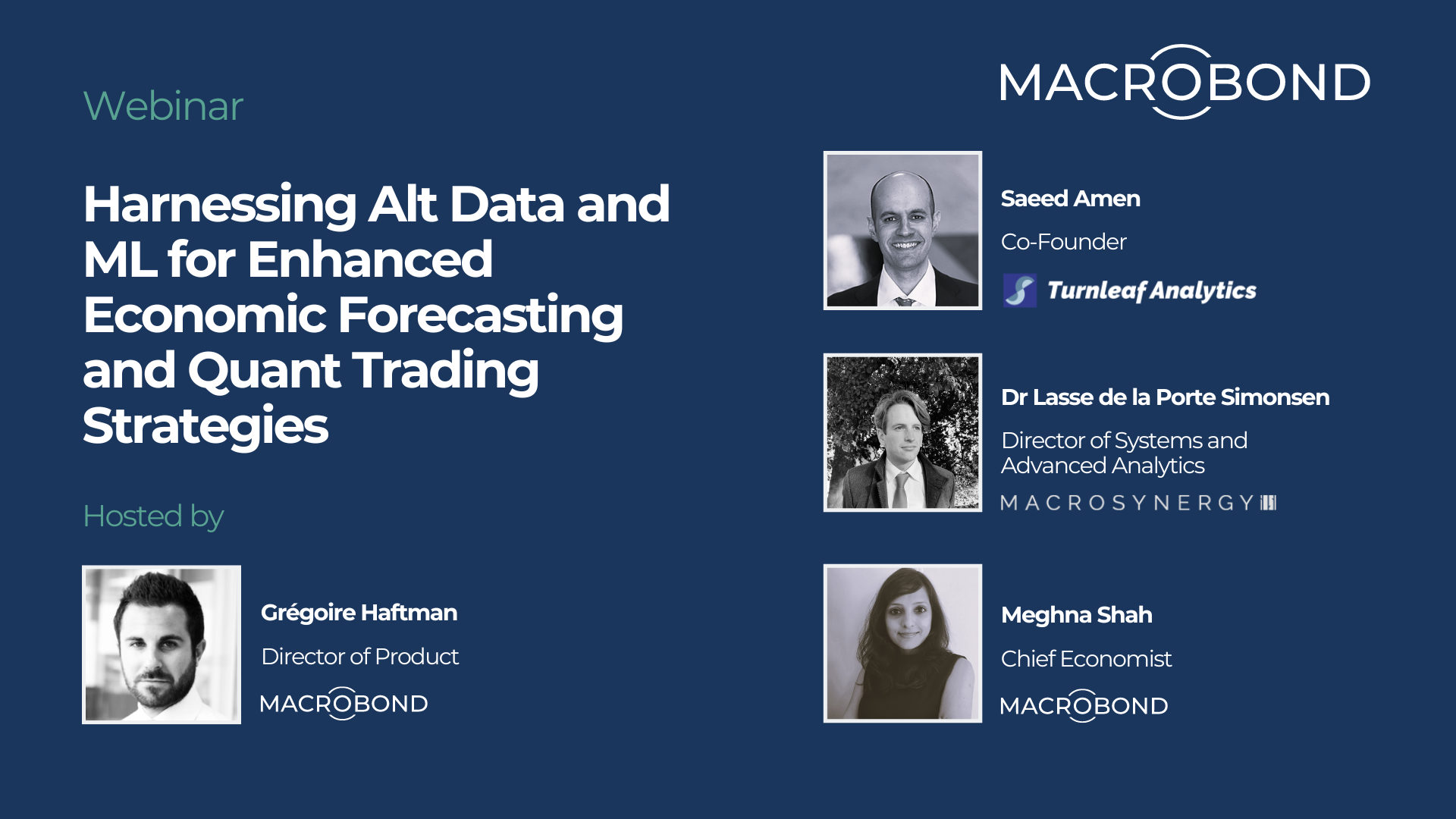Harnessing alternative data and machine learning for enhanced economic forecasting and quant trading strategies


On June 19, 2024 we hosted a webinar on how using alternative data, including in machine learning (ML) models, can enhance economic forecasting and trading strategies. In this blog we capture the views of Saeed Amen of Turnleaf Analytics, Dr Lasse de la Porte Simonsen of Macrosynergy and our in-house economist Meghna Shah.

Introduction
In today's dynamic financial landscape, traditional data alone no longer suffices to capture the intricate and rapidly evolving market trends. The advent of alternative data and machine learning has revolutionized economic forecasting and quantitative trading strategies, providing financial professionals with unprecedented insights and predictive accuracy.
How can we then unlock the power of alternative data? What precepts should be applied and what use cases can we address?
Understanding Alternative Data
Alternative data refers to non-traditional data sources that offer valuable information, directly or indirectly , about economic activities and market behaviors. These sources can include satellite imagery, social media trends, transaction data, and even environmental indicators. Unlike traditional data, which is often lagged and revised, alternative data provides real-time insights, enabling faster and more accurate economic forecasting.
The rise of alternative data is nothing new. But it took an exponential turn amid the digital transformation in the wake of the covid era, whereby many more sources published data that reflect economic and financial status-quo. The Internet of Things (IoT) is another example of the data that is readily accessible to inform on the real-world’s patterns.
The Role of Machine Learning
Machine learning algorithms are adept at processing vast amounts of data and identifying patterns that might be invisible to the human eye. By feeding alternative data into ML algos, financial analysts can develop models that predict economic indicators, such as inflation rates, with remarkable precision. For instance, at Macrobond, we use alternative data to enhance our traditional datasets , creating richer and more timely economic forecasts.
Practical Applications
The panelists covered practical applications of the use of alternative data and the benefits of doing so. Below are a few examples applicable to economic forecasting and quantitative trading strategies respectively.
Economic Forecasting. Turnleaf Analytics uses alternative data to provide macroeconomic forecasts with a focus on inflation data. By incorporating high-frequency indicators like Broadway ticket sales and pollution levels, their models offer timely and accurate predictions.
The benefit of this approach enables policymakers and investors to make informed decisions based on the most current economic conditions.
Quantitative Trading Strategies. Macrosynergy, in partnership with J.P. Morgan, utilizes alternative data to create backtestable macroeconomic strategies. This involves systematically analyzing data to develop and test trading algorithms, ensuring their robustness in various market conditions.
The benefit to traders mean they gain a competitive edge by leveraging data-driven strategies that are coming from empirical observations, and validated through extensive back-testing.
Challenges and Solutions
While the benefits of alternative data and ML are clear, there are challenges related to data quality, availability of historical observations, point-in-time accuracy, and the integration of diverse datasets. At Macrobond, we address these challenges by ensuring that our data is timestamped and revisions are preserved and exposed alongside original data, enabling accurate backtesting and forecasting.
Conclusion
The integration of alternative data and machine learning into economic forecasting and quant trading strategies represents a significant advancement in financial analysis. By harnessing these technologies, financial professionals can gain deeper insights, make more informed decisions, and stay ahead in an increasingly complex market.
Macrobond users can click here to open the chart from the thumbnail.
